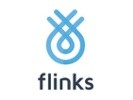
Flinks gives you the power to build the future of finance. Connect, enrich and utilize financial data to delight your customers with amazing products.
The Ultimate Guide to Embedded Finance—And How Flinks Enables It
Fintech companies have played an integral role in modernizing the traditional banking and finance landscape. As they continue to bring innovative and diverse products to market, their impact can be felt beyond the financial sector.
Non-financial companies are also discovering the benefits and added value of incorporating financial services within their business offerings. This is where embedded finance comes in.
By offering financial services to consumers, including bank accounts or wallets, payments, and lending, embedded finance gives non-financial companies a competitive edge as they look to bolster their product offerings, provide added value to customers, and continue to innovate.
This guide will provide you with a deeper understanding of what embedded finance is, how it works, and the myriad of ways it benefits both businesses and consumers. Let’s dive in!
What is Embedded Finance?
Embedded finance is when a non-financial company integrates a financial service into its product. For example, when a retail website offers monthly financing when purchasing a product, or a mobile e-commerce app offers an embedded payment option so customers can checkout with the click of a button.
The ultimate goal is customer convenience, saving them time and streamlining their experience. What makes embedded finance even more appealing is that it benefits both non-financial institutions and financial institutions. A win-win for everyone involved.
What are the Benefits of Embedded Financial Services?
Embedded finance not only increases customer convenience, but it also provides notable benefits for consumers and businesses alike. Let’s take a look at the multiple ways a company can benefit by implementing this cutting-edge technology.
- Onboarding New Customers Quickly
An embedded approach allows lenders to onboard clients quickly, which expedites loan processing and improves the volume of adjudicated loans. Having mastered the underwriting and onboarding processes, payment facilitators significantly improve the speed of processes, such as onboarding, far more than traditional payment processors could. As a result, embedded finance allows for a more flexible infrastructure and wider reach.
- Enhancing the Customer Journey
Allowing customers to pay directly on your platform provides a simple, streamlined experience. This, in turn, promotes a positive purchasing experience, which is more important than ever in a crowded marketplace. By implementing an embedded payment model, you can also reduce the number of payment systems your company relies on, which simplifies and improves the overall experience.
- Reducing Drops in the Checkout Flow
The ease of use associated with an embedded payment drives more sales opportunities and decreases the likelihood of abandoned carts. Thanks to the added value and convenience that embedded payments add to your offerings, this technology can convert visitors to repeat customers and provide a leg up against competitors.
- Providing Extra Value-Added Services
A payment facilitator can offer various value-add services that enable lenders to diversify their offerings and expand into new markets with the click of a button. These platforms enable value-added services such as credit, insurance, and structured payments, with some leading embedded payment platforms now offering investments and personalized account services. Using such services can assist businesses in raising their profile and expanding their customer base.
Embedded Finance vs. Banking as a Service
As a growing sector, it’s understandable that the terminology around embedded finance is used interchangeably.
A main example of this is banking as a service (BaaS) versus embedded finance.
BaaS is essentially white-labelled bank products built for financial services and financial institutions. It can be a way for smaller banks to accelerate their digital offerings, and for bigger banks to integrate faster tools that they know their clients will love.
For instance, a budgeting app can be produced as a BaaS white-label product by a third-party financial services company, which a bank can then buy and brand as its own.
Definition: Embedded Finance
This concept is much broader. McKinsey and Company defines embedded finance as “the placing of a financial product in a nonfinancial customer experience, journey, or platform.” Payments, lending services, insurance, or investing—all can be embedded.
In order to get a better understanding of how embedded finance works, let’s examine a few real-word examples.

Examples of Embedded Finance
Embedded finance is currently found in dozens of different digital products and services that users interact with regularly. Here are a few noteworthy examples that stand out:
The platform has enabled merchants to accept payments from VISA, MasterCard, and others directly through the platform. It avoids third-party payment gateways and their fees. They’ve introduced Shop Pay, an embedded payment option that accelerates and increases check-out rates. Embedded finance at its best.
Rather than having to handle cash, the ride-sharing platforms use embedded payment services as a way to make the riding experience as smooth and streamlined as possible.
An embedded lending option that provides merchants with a buy-now-pay-later solution. It works by being embedded on eCommerce pages to increase sales and conversions.
Verticals of Embedded Finance
Any sector can benefit from the use of embedded financial services. By introducing this convenient and easy-to-use option as part of their services, businesses can appeal to a wider customer base and increase their revenue in the process.
Let’s examine how Flinks enables the integration of embedded finance to get a better understanding of its value for your company.
Embedded Payments
The most common example of embedded payments is when companies keep their customers’ chosen payment option on file via an account or loyalty profile. Embedded payments are used by companies such as Uber, Starbucks, and Amazon in order to create the ultra convenient experiences they’ve become famous for. When you choose the quick check out option, for example, that’s embedded payment in action.
The way that Flinks Connect integrates with financial institutions is through embedding widgets. By placing a designated widget wherever they see fit within their product’s flow, companies can receive instant access to the relevant backend information that can be leveraged to initiate payment. The product itself then obtains all the required information to make the payment and seamlessly deliver a streamlined payment experience for the end-user.

Embedded Lending
Embedded lending occurs when lending is offered through non-financial services or products. With just a few clicks, customers can access the capital they need right from SaaS companies they know and trust.
Buy now and pay later (BNPL) is currently one of the hottest areas of embedded lending, as represented by companies such as Affirm/Paybright, Klarna, and Afterpay. By embedding a BNPL payment option into your app or website, it becomes more convenient for your customers to get financing for their purchases.
Using a customizable API solution like Flinks gives a business the ability to fully integrate embedded lending services into their platform and tailor it to their customers’ needs. This makes it easier for customers to quickly access the capital they need, whether it’s to finance a purchase or scale and grow their business.
Embedded Investments
At first glance, you might not immediately think of investments as an embedded finance option. Embedded investing, however, is an up and coming service in the embedded finance sector. It enables platforms to seamlessly integrate investment products and services into existing offerings.
For example, MotivHealth, a health insurance company, has implemented an embedded investment option to their customers by giving them the ability to invest their health savings account (HSA) balances within their MotivHealth insurance dashboard.
This is one example of the way embedded investments help companies rapidly build and roll out new investment products.
Embedded Insurance
Embedded insurance is about offering affordable, relevant, and customized insurance to customers when they need it most. Examples include:
- Opting for extended protections on a new cellular device
- Travel insurance when you book a flight
- Coverage for new appliances while checking out—either online or in-store
- Airbnb offering Host Protection and Host Guarantee insurance
- Car rental companies offering coverage while renting a vehicle
Flinks helps users experience a seamless insurance flow by pulling all the necessary information and providing identity verification when purchasing insurance during checkout. By making the process of buying insurance simple and stress-free, you’re more likely to convert potential insurance buyers who might be on the fence.
Embedded Banking
Embedded banking refers to incorporating traditional banking tools—such as debit cards and checking accounts—into non-financial platforms like a marketplace or retailer.
To offer embedded banking, a company will need to partner with a bank to incorporate the service. This can easily be done by incorporating financial APIs with banking connections into your product flow, such as Flinks Connect.
When companies implement embedded banking, they make the customer’s journey more convenient and easier to navigate. By simplifying user flows, it’s easier to convert potential customers as they are less likely to drop out of the flow.
Associating your business with a positive customer experience also helps in improving retention and boosting your reputation, as happy customers are more likely to return and promote your business through word of mouth.
Upcoming Trends in Embedded Finance
From providing businesses with new opportunities to generate revenue and fostering greater trust in innovative financial services, to spearheading the adoption of new technological advancements and pushing the boundaries of product innovation, embedded finance is already making a positive impact on the market.
Overall, here’s what you can expect from the embedded finance space over the short to medium term:
- Increased customer demand for integrated experiences
- Easier diversification of customer experiences and offerings
- New revenue models
- Continued product innovation
- A greater role for financial services in everyday digital interactions

Why Choose Flinks for Embedded Finance?
- Conversions
When you choose Flinks OAuth Connectivity, you are empowering end users to quickly and securely access financial products and services. That’s because OAuth offers increased connectivity and security for your customers.
This, in turn, gives you the ability to provide a smooth authentication and onboarding process for the financial products or services you choose to embed. With better connections, higher user trust, and fewer errors, your conversion rates will soar.
- Insights
In order to make accurate and timely lending decisions, especially in an unpredictable market, accurate financial data and reporting is paramount in the decisioning process.
Flinks Enrichment gives you the ability to use our 1800+ attributes library to improve your underwriting or populate your existing lending models with accurate and real-time bank transactions insights. For example, lenders can generate a detailed user analysis based on the raw financial data in order to make an informed decision and mitigate default risks.
- Ease of Integration
Thanks to our award-winning support, it’s incredibly simple to integrate with solutions such as Flinks Connect and have it up and running as fast as possible. This ensures your solution can go to market quickly, maintaining your competitive edge.
- Multifunctional Capabilities
Choosing to embed Flinks into your product significantly expands your capabilities. Based on your needs and the customization you choose, you’ll be able to provide various services within the same flow. This gives you the flexibility you need to continue to provide innovative products and services.
Looking at the Big Picture
Embedded finance is an integral part of the next wave of digital innovation. Giving consumers access to the right financial tools whenever and wherever they need them is a benefit that everyone can get behind. Curious about how this technology can be seamlessly integrated into your business or product? The Flinks team would love to show you how.
